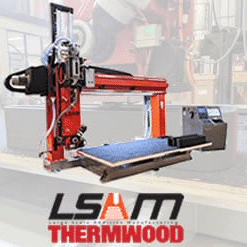
Composites in the Fast Lane
Since the DOE is a primary sponsor of IACMI, much of the research will involve removing entrained energy in glass and carbon fiber composites. The 10-year goal is to reduce manufacturing costs by 50 percent, reduce energy costs by 75 percent and increase the recyclability of composites to more than 95 percent. “It’s all with an eye to mass production – 100,000-plus platforms is the goal,” says Craig Blue, CEO of IACMI. “So we’re also going to be looking heavily at cycle times and reducing cycle times south of two minutes.” Winning Business in a Competitive Industry There are other issues that the composites industry must address to win full acceptance in the automotive industry. Composite manufacturers must find cost-effective resins that produce little or no VOCs. The industry must also ensure that there is a sufficient supply of carbon fiber to meet the demands of high-volume automotive production. (Zaluzec says he’d like to see some entrepreneur do for the composites industry what Andrew Carnegie did for steel, building multiple plants across the country.) And while OEMs are intrigued by the possibilities in CFRP and other composites, they are also interested in the breakthroughs in other lightweight materials. “I love the materials industry because we have more options today than we’ve ever had; our product development engineers can choose from steel, aluminum, glass fiber or carbon fiber composites,” says Zaluzec. “We’re material agnostic, so every material will be considered. We want the right material on the right product at the right time.” Ironically, one of the benefits of composites – the vast range of material and resin choices and formulations – puts them at a disadvantage in this competition. “People know steel, they know aluminum, they know the mechanics and the different grades and specifications,” says Kevin Richardson, global marketing manager of long fiber thermoplastics (LFT) at PPG Industries. “But when you get into composites, they are made up of a number of raw materials and those raw materials can be changed or modified as far as percentages. So you don’t have that nice little book that you can open up and say composite A is going to get this performance and composite B will get this.” Because automotive engineers and designers don’t understand the properties of composites, they don’t take advantage of their full potential. “You just can’t swap out a part and put a composite one in its place,” says Keith Bihary, corporate sales director, Molded Fiberglass Companies. "It really needs to be designed up front to get the real benefits of parts consolidation, proper material selection, etc. It needs to be happening early on rather than after the fact." The composites industry needs to keep pushing to educate engineers and to find the answers that the automakers need. “It will be too late if we wait three or four years; somebody else will come along with the solution,” says Gigas. “It’s not just about bringing them a material or a resin; it’s bringing them solutions to their challenges, and that’s who’s going to win.”

SUBSCRIBE TO CM MAGAZINE
Composites Manufacturing Magazine is the official publication of the American Composites Manufacturers Association. Subscribe to get a free annual subscription to Composites Manufacturing Magazine and receive composites industry insights you can’t get anywhere else.



